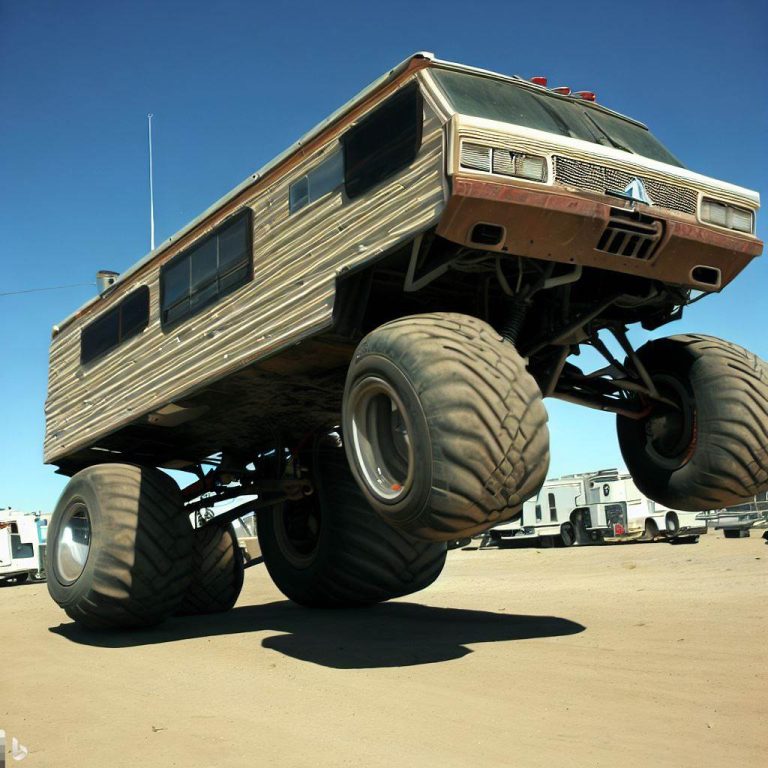
Understanding RV Suspension Systems: Maintenance and Upgrades
Traveling in an RV offers the promise of adventure, freedom, and a home on wheels. To fully enjoy your journey, it’s essential to understand and maintain the crucial components that make your RV safe and comfortable. One of these critical components is the suspension system. In this article, we’ll delve into the world of RV suspension systems, exploring their significance, maintenance requirements, and potential upgrades that can enhance your RVing experience.
Why RV Suspension Systems Matter
The suspension system of your RV plays a pivotal role in ensuring a smooth, comfortable, and safe ride. It is responsible for:
- Ride Comfort: A well-functioning suspension system absorbs road imperfections, preventing jarring shocks and vibrations from reaching your living quarters. This directly affects your overall comfort during your RV adventures.
- Vehicle Control: An effective suspension system keeps your RV stable and improves handling. This is especially crucial when navigating winding roads, making sharp turns, or dealing with adverse weather conditions.
- Safety: A properly maintained suspension system contributes to safe driving by reducing the risk of rollovers, swaying, and loss of control, particularly when towing a trailer or driving a larger motorhome.
Now, let’s explore the various aspects of RV suspension systems, including their maintenance and potential upgrades.
Maintenance Tips for RV Suspension Systems
- Regular Inspections: Start by inspecting your RV’s suspension system regularly. Look for signs of wear or damage, such as cracked or damaged components, leaking shocks, or loose bolts.
- Check Tire Pressure: Proper tire pressure is essential for the performance of your suspension system. Insufficient pressure can lead to a rough ride, decreased stability, and increased tire wear. Refer to your RV’s manual for recommended tire pressures.
- Inspect Bushings and Joints: Pay close attention to the bushings and joints in your suspension system. These components can wear out over time, leading to a reduction in ride quality. Replace any damaged or worn bushings and joints.
- Lubrication: Ensure that all pivot points and moving parts in your suspension system are well-lubricated. This prevents unnecessary friction and wear.
- Wheel Alignment: Correct wheel alignment is crucial for proper suspension function. If you notice uneven tire wear or your RV pulling to one side, have the alignment checked and corrected by a professional.
- Replace Shocks and Springs: The shocks and springs in your suspension system may need replacement after a certain number of miles or years. Worn-out shocks can result in a bouncy ride, while sagging springs can lead to uneven weight distribution. Consult your RV’s manual or a qualified technician for guidance on replacement intervals.
Potential Upgrades for Your RV Suspension System
- Upgraded Shocks: Replacing your RV’s stock shocks with high-quality, adjustable shocks can significantly improve ride comfort and handling. Adjustable shocks allow you to fine-tune your suspension to suit various road conditions and loads.
- Air Springs: Air springs, also known as air bags, can provide additional support to your suspension system. They allow you to adjust your RV’s ride height and load-carrying capacity, making them an excellent choice if you often travel with varying loads or tow heavy trailers.
- Heavy-Duty Springs: If you frequently load your RV to its maximum capacity, consider upgrading to heavy-duty springs. These springs provide additional support and help maintain a level ride, even with a heavy load.
- Anti-Sway Bars: Anti-sway bars can reduce body roll and sway when driving your RV, especially when towing a trailer. Installing sway bars can significantly improve stability and control, enhancing safety during your travels.
- Leaf Spring Helpers: If your RV has leaf springs, consider adding leaf spring helpers, also known as spring assists. These devices help support the suspension and prevent sagging under heavy loads.
- Independent Suspension Conversion: Some RV owners opt for a more advanced upgrade by converting their RV to an independent suspension system. This modification can result in a smoother ride and improved handling, but it’s a significant undertaking that should be done by professionals.
Choosing the Right Suspension Upgrades
Before upgrading your RV’s suspension, it’s essential to consider your specific needs and the type of RV you own. Some upgrades may be more suitable for certain RV classes or usage scenarios.
- Consult with Professionals: Consult with experienced RV mechanics or suspension specialists to determine the best upgrades for your RV. They can provide valuable insights based on your RV’s make, model, and your intended use.
- Budget Considerations: Upgrading your RV’s suspension can be a significant investment, so it’s crucial to budget accordingly. While high-quality upgrades can improve your RV’s performance and comfort, consider your budget constraints and prioritize upgrades accordingly.
- DIY vs. Professional Installation: Some suspension upgrades can be installed by DIY enthusiasts with the right tools and knowledge, while others may require professional installation. Ensure you have the necessary skills and equipment before attempting any upgrades yourself.
Your RV’s suspension system is the foundation of a comfortable and safe journey. Regular maintenance and, when needed, thoughtful upgrades can significantly enhance your RVing experience. Whether you’re seeking a smoother ride, improved stability, or better control, understanding your RV’s suspension system and investing in its care and potential enhancements will ultimately lead to more enjoyable and worry-free adventures on the open road.